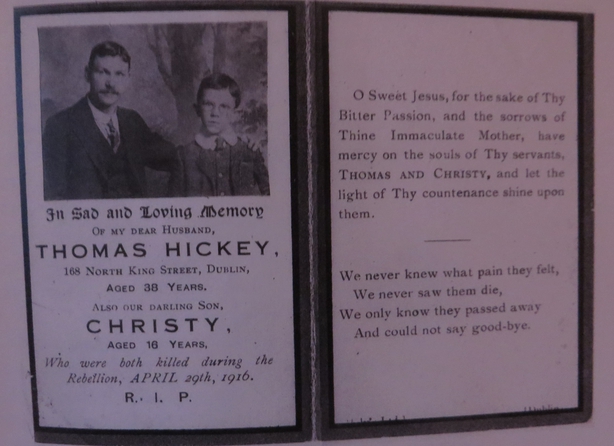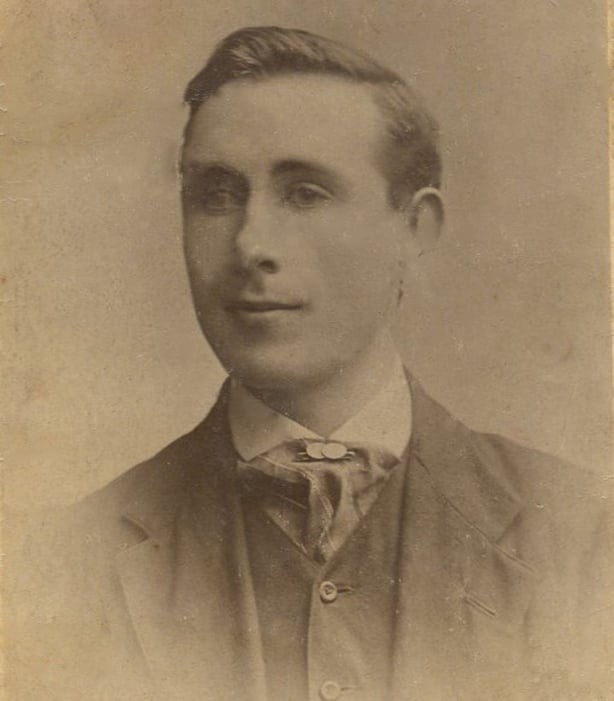A memorial is to be unveiled this Saturday to the victims of the North King Street massacre, which occurred during the Easter Rising.
British troops killed 14 men and two teenage boys around North King St during the last days of the Rising.
The victims were mainly small business owners and employees who had remained on their premises to prevent looting.
Photographic credits:
The photograph of what is now the Tap Pub Credit Military Archives Ireland BMH P-30-024
The South Staffordshire Regiment 2/6th Battalion Credit Imperial War Museum Q 300
Shops on North King St Credit Tina Devine
Photographs of Victims Credit Hickey and Bealin families
Newsreel footage Credit Imperial War Museum
Many of the bodies were buried by the troops in cellars and back gardens.
Some of the victims had been robbed of their valuables.
The 2/6th South Staffordshire Regiment carried out the killings.
Their battalion had suffered 14 officers and men killed in two days of fighting on the street. They claimed that they broke into houses where sniper fire was coming from and that the deceased had been found with weapons.

There was also the order issued by General Lowe that rebels were not to be taken prisoner.
However, an editorial in the Freeman's Journal pointed out that the British Army had not gone around Merrion Square killing local residents as suspected rebels.
The killings were raised in the House of Commons by Irish Party MPs and there were demands for a public inquiry.
General Maxwell defended the soldiers actions although he admitted that "possibly unfortunate incidents" had occurred.
The authorities halted the inquests, held a secret military inquiry that found no-one responsible and refused a public inquiry.
It was not until 2001 that a secret government memo was released which admitted that some of the troops could have been guilty of unlawful killing.
The North King St massacre became largely forgotten until recent years, even though more people died in that incident than in Croke Park on Bloody Sunday in 1920.
This Saturday will see the unveiling of the first ever memorial to the victims following the efforts of the Stoneybatter and Smithfield People's History Project.

